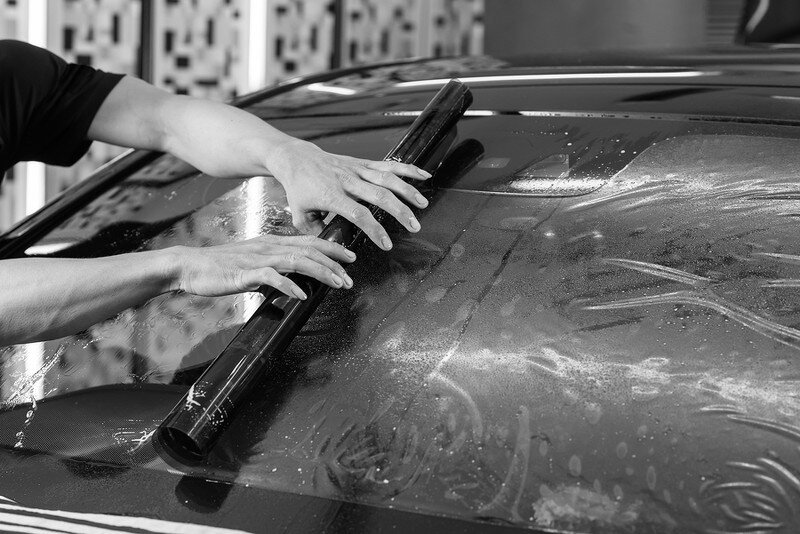In reality, tinted windows are nothing more than the original car windows with plastic sheets attached. The tinted windows themselves are those that come colored from the factory, and usually have bluish or greenish tones.
Approved car window tinting films are usually darker, and beyond aesthetics, they have many other functions. For example, they are a very practical element to improve comfort in the cabin, as they provide privacy to passengers and protect them from the sun.
Therefore, tinted windows are especially useful when children travel in the vehicle or when living in quite hot areas. The reason happens to be very simple: the car will heat up less, so it will also need less energy to cool it. This can translate into lower fuel consumption.
On the other hand, they protect us against the sun’s UV rays, thus reducing visual fatigue and protecting the interior of our vehicle from the wear and tear that sun exposure can cause over time. In short, the interior of our car will age more slowly.
Another key factor in tinting rear car windows happens to be privacy, since with them it is more difficult to see the interior of the vehicle. This way you will also prevent someone from seeing if you are carrying something valuable and breaking some glass to steal it.
Also very important is the fact that tinting the windows of our vehicle will reduce annoying glare when driving at night. The darkened rear car window will prevent vehicles behind you from dazzling us with their headlights.
Finally, a great advantage of tinted car glass is that, as it is an adhesive sheet, it can protect us in the event of an impact. For example, if a window breaks, hundreds of glass splinters will not be projected, since the sheets adhered to the glass will prevent them from flying.
Is approval needed to tint car windows?
Since the last legislative change, window tinting is no longer considered a major reform, so it is no longer necessary for the ITV to approve the installation through an extraordinary inspection.
Furthermore, it happens not to be necessary for anything to appear in the vehicle’s technical data sheet, nor is a certificate from the installing workshop necessary, as when a tow hook is fitted.
Advantages of tinted windows
The aesthetic issue is something personal, so it cannot be judged by any means. There are those who love dark glass and those who think it is nonsense, but what is true is that they have a series of advantages and also disadvantages, and that is what Car window tinting Brampton experts happen to focus on the main part so that they can assess if you are interested.
They reduce the heat inside the car:
Most filters used when tinting the windows reduce the radiation that passes through them. This causes the temperature in the cabin to be lower and the air conditioning to work more efficiently. If you look, in the sunniest countries the cars have almost completely black windows and appear opaque.
Safety in case of breakage:
The front windshield of cars is laminated by law. This is because in this way, in the event of breakage, the pieces of glass do not come off but rather remain stuck to a layer of plastic material that is integrated between the two layers of glass of the windshield. However, the windows and rear glass are made of tempered glass that splinters into tiny pieces when broken. Very few cars have laminated glass in the doors or rear window.
Privacy:
Darkened windows make it more difficult for us to be seen from the outside.
Comfort for the little ones:
Children are more sensitive to solar radiation and, due to their height, are more exposed to it than us. While an adult is hardly bothered by the sun because their eyes are usually in the shadow area produced by the ceiling, they, by going lower, receive more light directly into their eyes. One solution happens to be to cover the window with a curtain or cloth, but the glass can also be tinted with a laminate.

